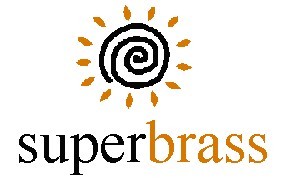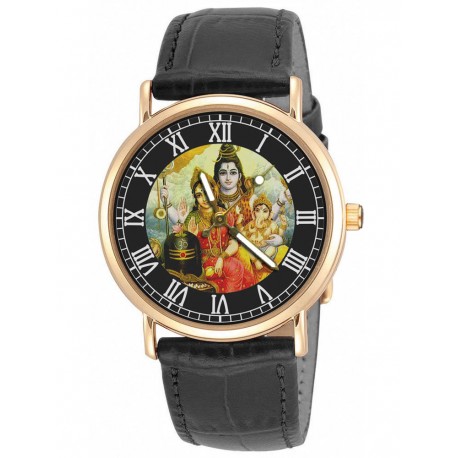Cart 0 Product Products (empty)
No products
To be determined Shipping
$ 0.00 Total
Product successfully added to your shopping cart
Quantity
Total
There are 0 items in your cart. There is 1 item in your cart.
Total products
Total shipping To be determined
Total
Religious Art
New products
-

Seth vs Osiris, Ancient Egypt Metallic Original Art Solid Brass Collectible Mens' Watch
40 mm solid brass casing in gold finish with stainless steel back...
$ 121.44 -

Chinese Traditional Good Luck Dragon Art Gold Medallion Solid Brass Men's Watch
40 mm solid brass casing in gold finish with stainless steel back...
$ 129.59 -

English Colours Fire-Breathing Dragon Ancient Parchment Fantasy Art Brass Watch
40 mm solid brass casing in gold finish with stainless steel back...
$ 137.74 -

Ancient Blue Fire-Breathing Dragon Parchment Art Solid Brass Mens Dress Watch
40 mm solid brass casing in gold finish with stainless steel back...
$ 137.74 -

Golden Dragon Metallic Art Solid Brass Collectible Men's Fantasy Good Luck Watch
40 mm solid brass casing in gold finish with stainless steel back...
$ 121.44
Lord Shiva, Parvati and Bal Ganesh. Raja Ravi Varma Art Hinduism Collectible Wrist Watch 30 mm
REL-013S
New product
- 30 mm ladies' size solid brass casing with stainless steel back
- premium 2040 quartz movement.
- original parchment art acrylic dial
- waterproof bracelet with brass buckle
- 1 year warranty
More info
Attributes of Lord Shiva
- Shiva's form: Shiva has a Trident in the right lower arm, with a crescent moon on his head. He is said to be fair like camphor or like an ice clad mountain. He has fire and Damaru and Mala or a kind of weapon. He wears five serpents as ornaments. He wears a garland of skulls. He is pressing with his feet the demon Muyalaka, a dwarf holding a cobra. He faces south. Panchakshara itself is his body. (The trident, like almost all other forms in Hinduism, can be understood as the symbolism of the unity of three worlds that a human faces - his inside world, his immediate world, and the broader overall world. At the base of the trident, all three forks unite.)
- Third eye: (Trilochana) Shiva is often depicted with a third eye, with which he burned Desire (Kāma) to ashes, called "Tryambakam" (Sanskrit: त्र्यम्बकम् ), which occurs in many scriptural sources. In classical Sanskrit, the word ambakadenotes "an eye", and in the Mahabharata, Shiva is depicted as three-eyed, so this name is sometimes translated as "having three eyes". However, in Vedic Sanskrit, the word ambā or ambikā means "mother", and this early meaning of the word is the basis for the translation "three mothers". These three mother-goddesses who are collectively called the Ambikās.[80] Other related translations have been based on the idea that the name actually refers to the oblations given to Rudra, which according to some traditions were shared with the goddess Ambikā.
- Crescent moon: (The epithets "Chandrasekhara/Chandramouli")- Shiva bears on his head the crescent moon. The epithet Candraśekhara (Sanskrit: चन्द्रशेखर "Having the moon as his crest" - candra = "moon"; śekhara = "crest, crown") refers to this feature. The placement of the moon on his head as a standard iconographic feature dates to the period when Rudra rose to prominence and became the major deity Rudra-Shiva. The origin of this linkage may be due to the identification of the moon with Soma, and there is a hymn in the Rig Veda where Soma and Rudra are jointly implored, and in later literature, Soma and Rudra came to be identified with one another, as were Soma and the moon. The crescent moon is shown on the side of the Lord's head as an ornament. The waxing and waning phenomenon of the moon symbolizes the time cycle through which creation evolves from the beginning to the end. Since the Lord is the Eternal Reality, He is beyond time. Thus, the crescent moon is only one of His ornaments. The wearing of the crescent moon in his head indicates that He has controlled the mind perfectly.
- Ashes: (The epithet "Bhasmaanga Raaga") - Shiva smears his body with ashes (bhasma). Ashes represent the final reality that a human being will face - the end of all material existence. Some forms of Shiva, such as Bhairava, are associated with a very old Indian tradition of cremation-ground asceticism that was practiced by some groups who were outside the fold of brahmanic orthodoxy.[89] These practices associated with cremation grounds are also mentioned in the Pali canon of Theravada Buddhism.[90] One epithet for Shiva is "inhabitant of the cremation ground" (Sanskrit: śmaśānavāsin, also spelled Shmashanavasin), referring to this connection. It is interesting to see the peaceful acceptance of cremation ground temples of Batuk Bhairava, a form of Lord Shiva, by the general populace. At Ujjain, near the Kaal Bhairava temple lies such a cremation ground temple of Batuk Bhairava, with its legendary disciple Baba Dabral known throughout Central India (as he is blessed, people say, with the ability to literally read out incidents of the future in one's life just by holding one's palm).
- Matted hair: (The epithet "Jataajoota Dhari/Kapardin") - Shiva's distinctive hair style is noted in the epithets Jaṭin, "the one with matted hair",[92] and Kapardin, "endowed with matted hair" or "wearing his hair wound in a braid in a shell-like (kaparda) fashion". A kaparda is a cowrie shell, or a braid of hair in the form of a shell, or, more generally, hair that is shaggy or curly. His hair is said to be like molten gold in color or being yellowish-white.
- Blue throat: The epithet Nīlakaṇtha (Sanskrit नीलकण्ठ; nīla = "blue", kaṇtha = "throat") since Shiva drank the Halahala poison churned up from the Samudra Manthan to eliminate its destructive capacity. Shocked by his act, Goddess Parvati strangled his neck and hence managed to stop it in his neck itself and prevent it from spreading all over the universe supposed to be in Shiva's stomach. However the poison was so potent that it changed the color of his neck to blue.
Shiva bearing the descent of the Ganges River as Parvati and Bhagiratha and the bull Nandi look, folio from a Hindi manuscript by the saint Narayan, circa 1740

Statue of Shiva meditating in Rishikesh
- Sacred Ganges: (The epithet "Gangadhara") Bearer of Ganga. Ganges river flows from the matted hair of Shiva. The Gaṅgā (Ganges), one of the major rivers of the country, is said to have made her abode in Shiva's hair. The flow of the Ganges also represents the nectar of immortality.
- Tiger skin: (The epithet "Krittivasan").He is often shown seated upon a tiger skin, an honour reserved for the most accomplished of Hindu ascetics, the Brahmarishis.Tiger represents lust. His sitting on the tiger’s skin indicates that He has conquered lust.
- Serpents: (The epithet "Nagendra Haara"). Shiva is often shown garlanded with a snake. His wearing of serpents on the neck denotes wisdom and eternity.
- Deer:His holding deer on one hand indicates that He has removed the Chanchalata of the mind (i.e., attained maturity and firmness in thought process). Deer jumps from one place to another swiftly, similar to the mind moving from one thought to another.
- Trident: (Sanskrit: Trishula): Shiva's particular weapon is the trident.[88] His Trisul that is held in His right hand represents the three Gunas—Sattva, Rajas and Tamas. That is the emblem of sovereignty. He rules the world through these three Gunas. The Damaru in His left hand represents the Sabda Brahman. It represents OM from which all languages are formed. It is He who formed the Sanskrit language out of the Damaru sound.
- Drum: A small drum shaped like an hourglass is known as a damaru (Sanskrit: ḍamaru).[105][106] This is one of the attributes of Shiva in his famous dancing representation known as Nataraja. A specific hand gesture (mudra) calledḍamaru-hasta (Sanskrit for "ḍamaru-hand") is used to hold the drum.[108] This drum is particularly used as an emblem by members of the Kāpālika sect.
- Axe: (Sanskrit: Parashu):The parashu is the weapon of Lord Shiva who gave it to Parashurama, sixth Avatar of Vishnu, whose name means "Rama with the axe" and also taught him its mastery.
- Nandī: (The epithet "Nandi Vaahana").Nandī, also known as Nandin, is the name of the bull that serves as Shiva's mount (Sanskrit: vāhana). Shiva's association with cattle is reflected in his name Paśupati, or Pashupati (Sanskrit:पशुपति), translated by Sharma as "lord of cattle" and by Kramrisch as "lord of animals", who notes that it is particularly used as an epithet of Rudra. Rishabha or the bull represents Dharma Devata. Lord Siva rides on the bull. Bull is his vehicle. This denotes that Lord Siva is the protector of Dharma, is an embodiment of Dharma or righteousness.
- Gaṇa: The Gaṇas (Devanagari: गण) are attendants of Shiva and live in Kailash. They are often referred to as the bhutaganas, or ghostly hosts, on account of their nature. Generally benign, except when their lord is transgressed against, they are often invoked to intercede with the lord on behalf of the devotee. Ganesha was chosen as their leader by Shiva, hence Ganesha's title gaṇa-īśa or gaṇa-pati, "lord of the gaṇas".
- Mount Kailāsa: Mount Kailash in the Himalayas is his traditional abode. In Hindu mythology, Mount Kailāsa is conceived as resembling a Linga, representing the center of the universe.
- Varanasi: Varanasi (Benares) is considered to be the city specially loved by Shiva, and is one of the holiest places of pilgrimage in India. It is referred to, in religious contexts, as Kashi.
Reviews
No customer reviews for the moment.






